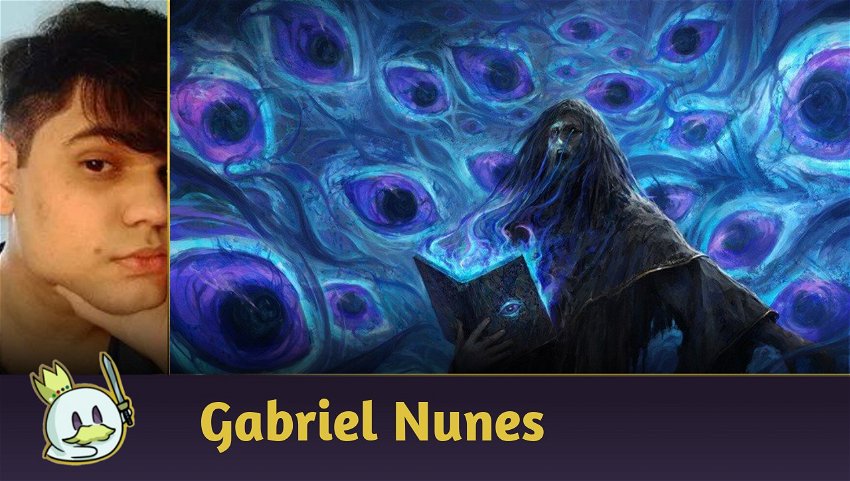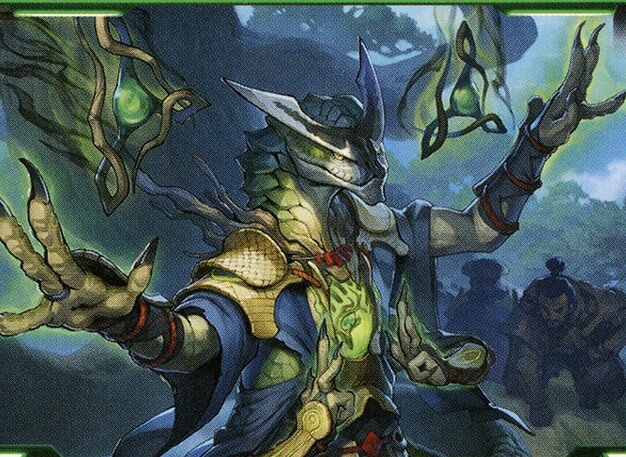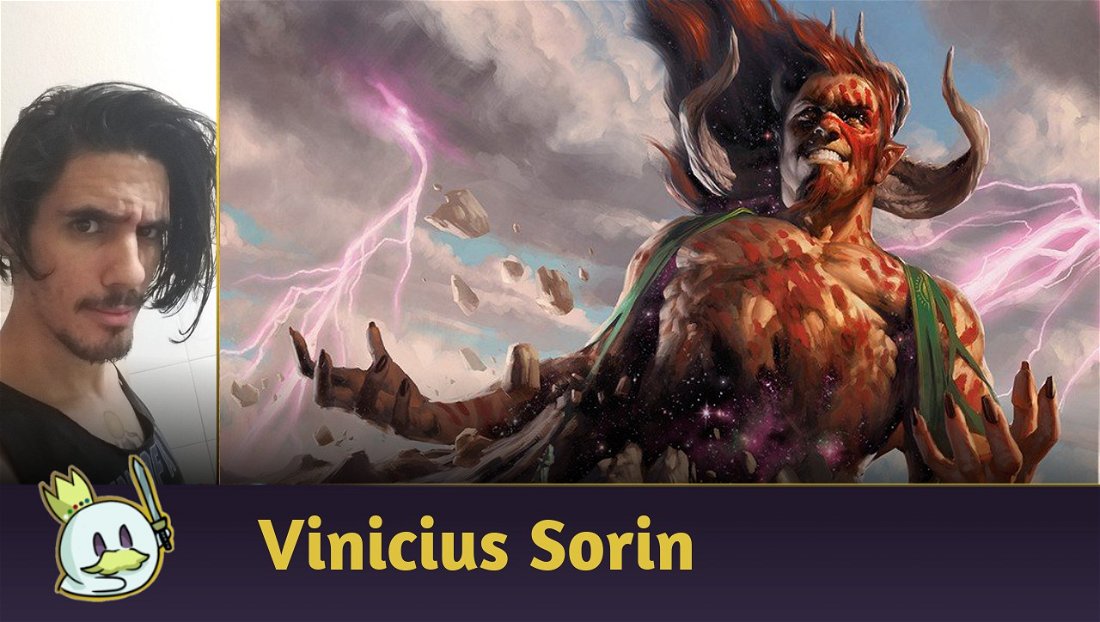Even if different, all Magic decks have a minimally similar way of playing: You use mana to cast cards and thus beat your opponent by casting the best cards at the best times, right? Not exactly.
As cards are released, basic concepts end up having exceptions in eternal formats. A great example of this is Dredge! With the ability that names the deck being featured in Ravnica coupled with graveyard mechanics, the deck plays in a very different way than the occasional deck.
To take a closer look at what makes Dredge such a different deck, let's take a look at the list that player NickNorman used to get fourth place in the January 30th Challenge.
Ad
Decklist - NickNorman's Dredge
How Dredge Works

Dredge is an ability that allows you to return a certain card from the Graveyard to your hand, in place of any draws you would make during the turn (which may include your initial draw). For that, the dredged card needs to be in the graveyard, and you need to pay the Dredge cost, which is to mill a specific number of cards from your own deck, thus returning the specific card to the hand.
Initially, the ability may have been thought of to give the player more recursion, returning specific cards to their hand instead of taking the risk of drawing a land in the late game, for example, but it gained more prominence as a way of putting cards in your graveyard aggressively, since, combined with draw spells and discards, the deck can use the ability to mill several cards during the turn.
"But why would I want to put my cards in the graveyard?", you may be asking yourself.
Over the years, countless interactions with graveyards have been launched practically since the beginning of the game, thus making the graveyard become a valuable resource for some cards, as in a simpler example, Dragon's Rage Channeler and Unholy Heat, which get more powerful as your graveyard becomes full and diverse.
Dredge is a combination of several graveyard resources in a single deck. Cards that come back from the graveyard, such as Narcomoeba and Prized Amalgam or cards that can be cast from the graveyard, such as Conflagrate, are the resources you will use to win the game. This makes your concept of draw and card advantage very different from conventional decks, as combined with your hand, you have an even greater variety of actions in your graveyard, which can often be reused.
New Cards from recent sets

Dredge is a deck with a long history in Modern and over the years it has seen a number of modifications and improvements (and even surviving a few bans, eh, Faithless Looting?). In fact, it is currently possible to see that numerous cards came to make the archetype more powerful, and I think it's fair to talk about them.
Thrilling Discovery was a somewhat obvious addition to the deck, as it is an improved version of the current best draw card that Dredge had, Cathartic Reunion. Thanks to 8 cards with the same function, the deck has more consistency in getting off to an explosive start and reaching as many cards in the graveyard as possible. The only challenge was in the cost of the card, since dredge was already a deck with a complex manabase, as it made use of four colors and needed its lands to enter untapped most of the time; adding white to a card you intend to use whenever possible is a risky choice, and because of that NickNorman had to make some concessions, such as removing green from the deck.
Another interesting card is Otherworldly Gaze, that as much as it doesn't draw cards, ends up becoming a source of card advantage. Being able to be used from the graveyard and excavating up to three cards per use, this spell takes advantage of Dredge's interactions. It really is a card that ends up not being used in any graveyard deck, since not drawing cards would be a massive disadvantage, but for Dredge, this issue is much less impactful.
Ad
Silversmote Ghoul is an addition that I, personally, found intriguing, as it is a card that only works by being with other recent cards. Its return condition is linked to gaining life, which is only possible thanks to the not-so-new Creeping Chill and the aforementioned Thrilling Discovery. Along with these cards, the Ghoul brings a more reliable clock to the deck.
Alternate Card Choices
As already said, thanks to Dredge being a historical deck in the format, to make some inclusions, other cards had to leave, but they have the necessary power to be in another configuration. This space is for talking about what was left out, but it might be interesting if you want another approach.

Life from the Loam was a card that hurt me not to see on the list, as its recursion and versatility were very allied to the deck. Loam was great for utility lands, served as an enabler for Bloodghast and was a great resource to use with Conflagrate, increasing the number of cards in your hand. I understand that due to the need for colors, the card ended up being underused, but perhaps by reducing the need for blue, Loam could be a possibility.

Speaking of the vampire, Bloodghast was one of Loam's best friends, as the synergy between the two made the ghast a constant threat. Thanks to the output of Loam and input of Thrilling Discovery, gaining life became a greater consistency than playing a land. Thus, the vampire spirit lost its place to Silversmote Ghoul.
Sideboard Guide
One of the first things about Dredge is that it is a strong deck and focused on a very common resource, this makes it suffer a lot from heavy graveyard hate from opposing sideboards.
While most first games will be your deck engine running wild, it's in games two and three that the battle really begins. Therefore, it is important to know that a large part of your sideboard is used exactly to deal with the opposing pieces, since most of the time you are the aggressor.
Looking at NickNorman's sideboard, it is noticeable that most of the cards are exactly interactions: occasional discards and removals. To better observe this factor, let's see how to sideboard against some popular decks of the current format.
Sideboard vs. Grixis Death's Shadow
IN:

OUT:

One advantage that Dredge has against Death's Shadow is that thanks to them using their graveyard for various things, the deck ends up not being able to use heavy threats to this resource on its sideboard.
This, coupled with the constant threat that Grixis feels of running low online and ending up losing due to Creeping Chill going to the graveyard, makes the matchup quite favorable. So a complete removal like Prismatic Ending most of the time is enough to deal with what they can offer.
Sideboard vs. Hammer Time
IN:

OUT:

Ad
The problems against Hammer Time are twofold: It has access to white, which is one of the best colors for dealing with graveyards, with cards like Sanctifier en-Vec, and the fact that the deck can get a free win out of nowhere.
Therefore, instant speed responses are required. For this, we have Ancient Grudge that can be cast even if it goes to the graveyardand Prismatic Ending that may deal with non-artficact threats, such as En Vec itself or even a Sigarda's Aid.
Sideboard vs. Burn
IN:

OUT:

Burn is another aggressive deck with access to white, which would be dangerous as our mana base ends up being quite aggressive, but thanks to our gain life cards and Leyline of Sanctity we can stay in the game, furthermore, Prismatic Ending again proves to be useful for dealing with any threat, whether it's a Rest in Peace, or a Sanctifier en-Vec.
Conclusion
Despite being well known, Dredge is a deck with very high explosive power and it will always perform well when the Metagame is not ready for it, but thanks to complete removals and more consistency, the deck can withstand hate and achieve good results in the format.
Any questions or suggestions, I'm available in the comments below.
Until next time!









— Comentarios0
Se el primero en comentar